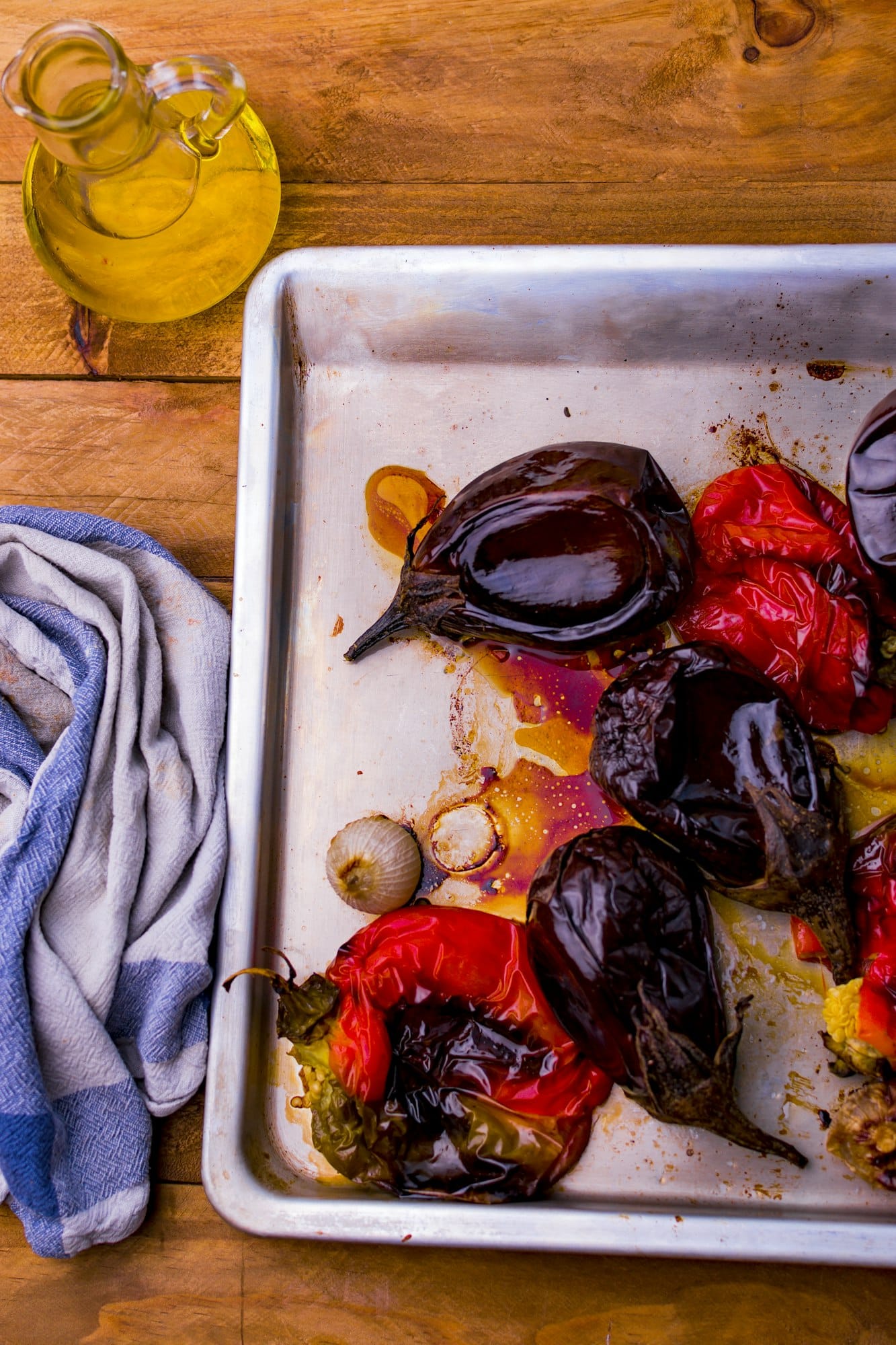For those who appreciate authentic, flavorful cuisine, Spain’s culinary offerings are a treasure trove of diverse tastes and textures. Today, we will explore a classic Spanish dish, known for its simplicity and bold flavors. Escalivada, a recipe with its roots in Catalonia, has become a staple in Spanish food culture. We’re going to discuss how to prepare this delicious dish with smoky vegetables and fresh anchovies. We’ll also explore how the unique flavors of Spanish olive oil, garlic, fresh tomatoes, and green pepper play a pivotal role in the execution of this dish.
The Art of Creating Spanish Escalivada
Escalivada is a simple and humble dish that relies heavily on the quality of its ingredients. It traditionally includes roasted eggplant and peppers, but the addition of fresh anchovies elevates it to a gourmet status. As you embark on this culinary journey, remember that the secret to a mouth-watering Escalivada lies in the use of fresh, high-quality ingredients and a patient, slow roasting process.
Dans le meme genre : How to Make a Flavor-Packed Korean Bibimbap with Gochujang Sauce and Crispy Vegetables?
To start, choose firm, ripe eggplants and sweet bell peppers. Coat these vegetables lightly in Spanish olive oil and season with salt. Roast them over an open fire or in a hot oven until their skins are charred and blistered. This process imbues the vegetables with a smoky flavor that forms the base of this dish’s unique taste profile.
Next comes the preparation of the fresh anchovies. Ensure they are cleaned and deboned meticulously. Season lightly with salt and garlic-infused olive oil, and then grill to perfection. The anchovies introduce a subtle, salty undertone that complements the smoky vegetables beautifully.
A lire également : What Are the Steps for an Authentic Japanese Katsu Curry with Panko-Crusted Chicken?
Incorporating Key Spanish Ingredients
As you get to grips with cooking Escalivada, you’ll find that certain ingredients are integral to Spanish cuisine. The first of these is Spanish olive oil. Known for its aromatic, fruity notes, Spanish olive oil adds depth and richness to dishes. It’s also a healthier option than butter or other fats, thanks to its monounsaturated fat content.
Garlic is another staple ingredient in Spanish cooking. It adds a robust, slightly spicy flavor that pairs wonderfully with the smoky vegetables and salted anchovies in the escalivada. Also, the fresh tomatoes and green peppers offer a fresh, sweet contrast to these intense flavors.
Crafting Authentic Spanish Tapas
Tapas are a timeless part of Spanish food culture. Small, shared dishes that are traditionally served with drinks, tapas are a delightful way to sample an array of Spanish flavors. Escalivada can be served as a tapa, making it a versatile dish that’s perfect for intimate gatherings or casual, laid-back dining.
Spread your escalivada generously over fresh, crusty bread, and top with a slice of sharp, Spanish cheese. The cheese’s creaminess balances the escalivada’s strong flavors, creating a tapa that will have your guests coming back for more.
Another option is to serve the escalivada as a salad. Toss the roasted vegetables and grilled anchovies with fresh tomatoes, crisp lettuce, and a simple vinaigrette made from Spanish olive oil, vinegar, salt, and pepper. This salad tapa is a wonderful celebration of Spanish flavors, fresh ingredients, and simple, honest cooking.
Experimenting with Escalivada Variations
While the traditional escalivada recipe is delicious in its own right, don’t be afraid to experiment with variations. You can try adding different types of seafood, like prawns or squid, to the dish. Alternatively, you could introduce more vegetables – artichokes, asparagus, or even zucchini can add a unique twist.
You can even play around with the dressing. Spice things up with a dash of smoked paprika, or add a squeeze of lemon for a burst of citrusy freshness. Ultimately, cooking is an art – let your creativity flow and have a great time preparing this delightful Spanish dish.
Remember, the key to a fantastic escalivada lies in the quality of the ingredients, the love with which it’s prepared, and the time given to let each ingredient shine. Get your hands on the freshest produce, take your time, and have fun exploring the world of Spanish cuisine.
Championing Olive Oil in Spanish Cuisine
Olive oil is more than just a cooking medium in Spanish cuisine; it is a flavor enhancer, a health benefactor, and a symbol of the Mediterranean lifestyle. The type of olive oil used can significantly affect the outcome of your dish, so choosing high-quality oil is crucial. Extra virgin olive oil is the top grade oil, known for its rich, fruity flavor, high nutritive value, and its low acidity level.
The importance of olive oil in Spanish cooking cannot be overstressed. Olive oil is the backbone of sauces like ‘Romescu’ and ‘Allioli.’ It’s used to braise meat, fish, and vegetables, and even used in desserts. In the case of the escalivada, the vegetables are slathered in olive oil before roasting, which helps to tenderize them and enhance their natural flavors.
Spain is the world’s largest producer of olive oil, with the Andalusia region being the highest contributor. The Basque Country, known for its innovative culinary scene, also produces its olive oil, which has a distinct, robust flavor. Using Spanish olive oil while cooking escalivada will bring you one step closer to the authentic flavor of this popular Spanish dish.
The Perfect Pairing: Spanish Wines and Escalivada
The enjoyment of any meal is often elevated by the right wine pairing. Spanish cuisine, known for its bold flavors and varied textures, is no exception. Spain’s diverse regions produce an array of wines, from the light and fruity whites of the Basque Country to the full-bodied reds of Rioja.
When it comes to pairing wine with escalivada, the dish’s smoky, robust flavors can stand up to both white and red wines. A wine from the Basque Country’s Txakolina region, known for its slightly sparkling, dry white wines, can cut through the smoky richness of the escalivada and complement the dish’s salty anchovy notes beautifully. A young, fruity red from the Rioja region would also pair well, its acidity balancing out the oily, rich flavors of the dish.
Ultimately, wine pairing is a personal choice and depends on individual tastes. So feel free to experiment and find the best match for your escalivada.
Conclusion
Creating a gourmet Spanish escalivada with smoky vegetables and fresh anchovies is an exciting culinary adventure. This journey takes you deep into the heart of Spanish cuisine, allowing you to explore the rich flavors, fresh ingredients, and simple cooking techniques typical of this vibrant culinary tradition.
From selecting high-quality vegetables and fresh anchovies to patiently roasting them till they’re just right, every step in the cooking process is an opportunity to deepen your understanding and appreciation of Spanish food culture. And whether you choose to serve your escalivada as a tapa or a main course, this versatile dish is sure to impress.
So, grab your olive oil, put on your apron, and let’s bring a bit of Spain into your kitchen with this delicious escalivada recipe. As they say in Spain, "Buen provecho!"






